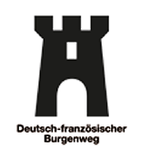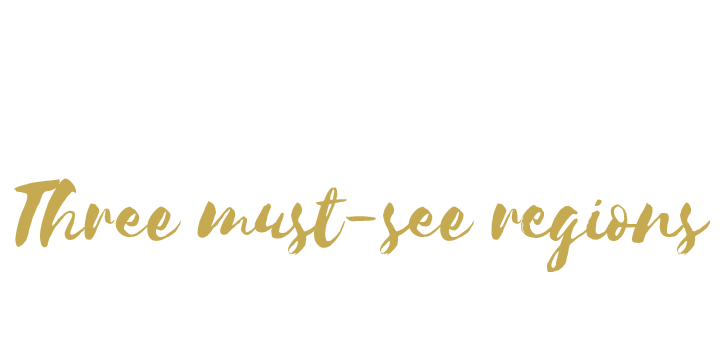German and French Castle Route

33 KM I 1381 HÖHENMETER I 1-2 TAGE. DAUER I SCHWER

SHORT DESCRIPTION
Walk from castle to castle in the Vallée de la Sauer and the Dahn Rockland on this cross-border route. Idyllic landscapes, woodland as far as the eye can see, towering red sandstone rock formations and the incredible ruins of fortified castles and feudal residences often reaching staggering heights feature on this sensational walk in Biosphärenreservat Nordvogesen-Pfälzerwald (Palatinate Forest/Northern Vosges Biosphere Reserve) across the border.
STARTING POINT AND HOW TO GET THERE
| THINGS TO SEE
|
PLACES TO STOP
- Lembach, Gimbelhof, Fleckenstein, Niedersteinbach, Wengelsbach, Obersteinbach, Fischbach-Petersbächel, Schönau, Nothweiler
TOUR DESCRIPTION
The loop is signposted – just look out for the castle symbol.
The starting point is the entrance to Burg Fleckenstein (Fleckenstein Castle). The Medieval castle, which dates back to the 12th century, is an impressive relic bearing witness to the Holy Roman Empire in Germany and its history in Alsace. It attracts lots of visitors who are interested in history as well as families given that it is suitable for all ages. You can have a go at the incredible three-hour “Rätselburg” tour that is aimed at families as the perfect introduction to the Middle Ages through puzzles or check out the “P’tit Fleck” play-based exhibition all about forests and sandstone for children aged from three to six.
Once you have visited the Burgruine (Castle Ruins), the route continues to the Fleckenstein Badesee (Bathing Lake) situated in the valley. Just on from the Badesee (Bathing Lake), carry on uphill and into the woods until you come to the Ruine Froensbourg (Froensburg Ruins), which are undoubtedly some of the most romantic castle ruins in the area. Here you can explore the spaces hidden in the rock as well as a cistern and a Gothic gateway.
From here, it is on to the Zigeunerfelsen Rocks next. The German name for these rocks is “Gypsy Rocks” because gypsies used them as a landmark to help them find their way for a long time. You will also come across what is left of a small castle built into the rocks. Now the legendary Wasigenstein Castle stands proud and tall – famous as the setting of Germanic tales of heroes, including in particular the “Waltharius”, an epic poem dating back to the 5th century.
Follow the path up through the valley to the Kleinen Arnsbourg (Small Arnsbourg Castle), which is one of the littlest liege lord residences in Alsace. Go on from here to Wachtfels Rock. Both of these spots offer a clear and stunning view of the village of Obersteinbach and the Steinbach Valley beneath it.
When you get to the mighty Windsteinerfels Rock in the Schlangenbach Valley, it will be time to cross the German/French border. A little bit further on, the “Bayrischer Windstein” Aussichtsturm (Viewing Tower) offers an amazing panoramic view over a sea of green, from which the slim silhouette of Burg Lutzelhardt (Lutzelhardt Castle) protrudes.
The route then continues via the “col du Florenberg” to the “Zollstock”, which was once the point at which smugglers would cross the border. Winding roads lead you from here up to the ridge called the “massif du Maimont”, where major fighting went on during the Second World War. Take a few steps and you will come across the Friedenskreuz (Peace Cross), which was erected by the Americans and the Germans after the war on a sandstone rock formation in remembrance of those who lost their lives during the fighting. The view from here is wonderful.
Head downhill to the Ruine Blumenstein (Ruins of Blumenstein Castle). The next point of interest is Schönau, which you can get to via the “col de Wengelsbach” and the Wengelsbach Valley. Here you will find a number of restaurants and places to stay.
When you are ready to leave Schönau, you will face a steep climb up the Schwobberg Ridge and the Schlüsselfels Rock to Wegelnburg, the highest castle in the Palatinate, standing at an altitude of 572 metres. The view of the mountains in the surrounding area is breath-taking. Once you have crossed the border, proceed straight ahead to the Ruine der Burg Hohenbourg (Ruins of Hohenburg Castle), where yet another stunning view is waiting for you. Walk a little further on to reach the Burgruine Loewenstein (Loewenstein Castle Ruins), where marauding knights were once given shelter.
Head back to Fleckenstein car park via the “col du Schlossberg”.
Alternative route: You can head back to the starting point in Fleckenstein from the “col du Schlossberg” via the incredible Felsenpfad (Rock Path) (follow the red triangle). Please note: We do not recommend taking this path if you have small children with you or if the weather is wet.
CONTACT
Office de Tourisme intercommunautaire de l’Alsace Verte
Bureau d’information de Niederbronn-les-Bains
6 place de l’Hôtel de Ville
67110 Niederbronn-les-Bains
0033 3 88 80 89 70
tourisme (at) alsace-verte.com
www.alsace-verte.com
Bureau d’information touristique de Sauer-Pechelbronn
2 route de Bitche
67510 Lembach
0033 3 88 86 71 45
CHÂTEAU FORT DE FLECKENSTEIN
Lieu-dit Fleckenstein – 67510 LEMBACH
Tél. +33 (0)3 88 94 28 52
info (at) fleckenstein.fr
www.fleckenstein.fr
Copyright photo on this page: © K. Gross
Copyright map: map.solutions GmbH



![[Translate to Englisch:] Foto: Best of Wandern - T. Bichler](/fileadmin/_processed_/b/3/csm_klein_Vue_autour_du_cha%CC%82teau_de_Fleckenstein__c_Best_of_Wandern_-_T._Bichler_f3f1f94960.jpg)
![[Translate to Englisch:] Foto: isocont GmbH Schrägstrich Peter Mast](/fileadmin/_processed_/5/b/csm_klein_Herbstanfang__c_isocont_GmbH_Schra%CC%88gstrich_Peter_Mast_1e032ee2ff.jpg)
![[Translate to Englisch:] Foto: Kraichgau-Stromberg Tourismus e.V.](/fileadmin/_processed_/a/b/csm_klein__c_Kraichgau-Stromberg_Tourismus_e.V_9b34654a95.jpg)